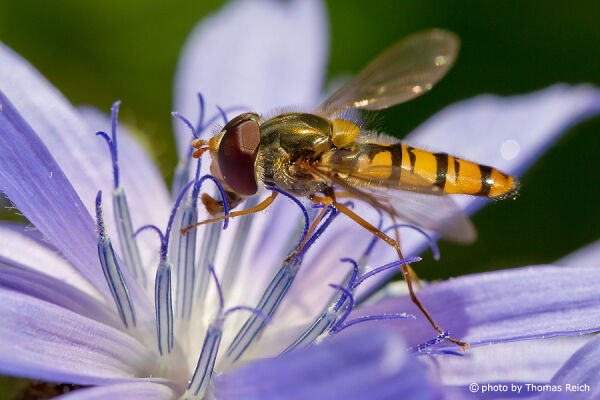Episyrphus balteatus, sometimes called the marmalade hoverfly.
Description & appearance
It is is a relatively small hoverfly (9–12 mm) of the Syrphidae family. The upper side of the abdomen is patterned with orange and black bands. Two further identification characters are the presence of secondary black bands on the third and fourth dorsal plates and faint greyish longitudinal stripes on the thorax. Its color patterns may appear wasp-like to other animals, such as birds, protecting it from predation. As in most other hoverflies, males can be easily identified by their holoptic eyes, i.e., left and right compound eyes touching at the top of their heads. Distribution & habitat
It is widespread throughout the Palaearctic region, which covers Europe, North Asia, and North Africa. E. balteatus can be found throughout the year in various habitats, including urban gardens, visiting flowers for pollen and nectar. They often form dense migratory swarms, which may cause panic among people for their resemblance to wasps. Food
It is among the very few species of flies capable of crushing pollen grains and feeding on them. The larva is terrestrial and feeds on aphids. 
